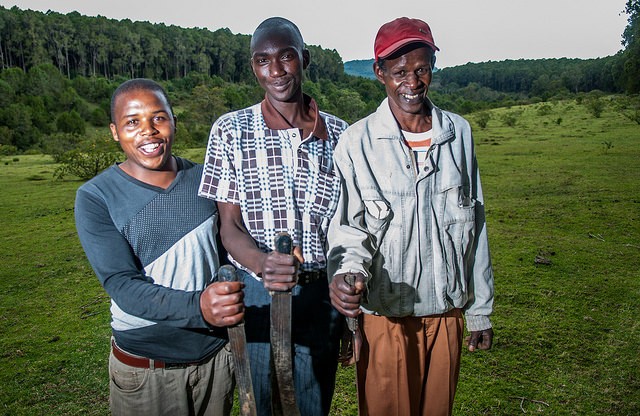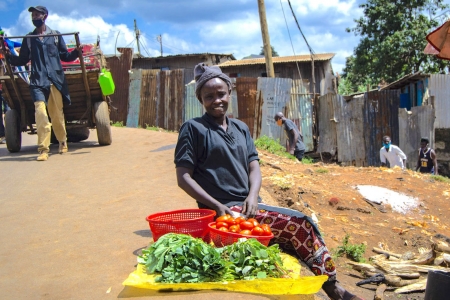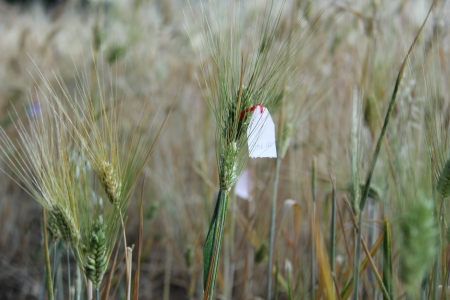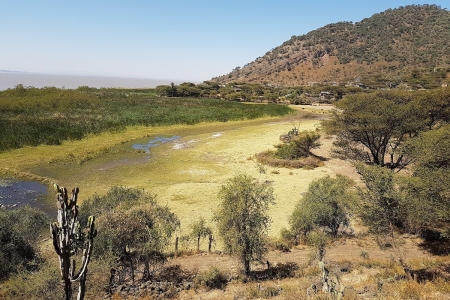This post is part of an online discussion on large-scale land interventions that runs through December 14, 2014. Can these initiatives fulfil their promises? Read more here and comment below or send an 800 word (max) response to a.waldorf@cgiar.org
Can large-scale land initiatives fulfill their promises?
Yes. In a word. It doesn’t have to cost the earth - but it’s not dirt cheap, and it takes a whole community.
Ask Fred Kihara, fund manager at The Nature Conservancy (TNC) in Kenya. All eyes – and a lot of money – are rested on the large-scale initiative he manages. When it launches next year, The Nairobi Water Fund will be a first for Africa, promising to restore degraded landscapes. But will it deliver?
A large-scale initiative is the only solution for a large-scale problem: soil erosion.
 The Tana River watershed is Kenya's life blood. Photo: Georgina Smith/CIAT.
The Tana River watershed is Kenya's life blood. Photo: Georgina Smith/CIAT.Soil is washing down Kenya’s largest 1000km long Tana River at unprecedented rates. In the last ten years, research shows sediment yields have jumped more than 30 percent - not due to increased rainfall, but damaging agricultural and industrial practices, like farming or quarrying on steep slopes.
What’s more, climate maps show land currently planted to tea could become more suitable for maize or beans in future. If tea - which protects soil from rain run-off - is replaced with other agricultural crops without soil protecting management practices, soil sediment loads in the Tana River look set to increase.
“The most critical thing here is to address the threat to water security right at its source - quality and quantity - and consider how costs and benefits of the resources we depend on in the ecosystem are distributed equitably across the landscape,” said Fred Kizito, International Center for Tropical Agriculture (CIAT)'s Nairobi-based Senior Scientist working on soils, water and landscapes.
Thinking big
TNC’s George Njugi visits farmers, water authorities, community leaders, quarry workers and government officials who work up and down the Tana River every day to track conservation efforts along the watershed.
Standing next to an upstream inlet near the Upper Tana’s source, he points to a stagnant, silted area. “What we see here is an area where all the water is being syphoned off,” he says. “The Tana River supports 10 million people, including four million in Nairobi. This upstream community did not consider people downstream, who will now complain about water shortages,” he notes.
But what if these “upstream” users of Kenya’s lifeblood understand this, and are taught new methods of storing and using water for drinking or irrigating their fields? What if these communities could access funds or technical support to protect water for downstream users?
Since 2012, the TNC’s Water Fund is a solution being piloted where big downstream users of the Tana River - companies, industries – provide financial and technical support to watershed “keepers,” or users upstream. It unites private, public sector workers and farmers to invest in conservation activities.
Fund members like the Kenya’s Sustainable Agriculture Community Development Programmes’s Jj Wachira. Pointing to the biggest landslide site in the upper Tana region, he explains: “We’re sensitizing people to divert water so we minimize the volume of water coming here.” He is also working with communities to plant indigenous trees and grasses with deep rooting systems to hold soil firmly.
Or beneficiaries like banana farmer Daniel Muchiri. “I discovered my top soil is flowing from the farm to the rivers,” he said. “Its’ difficult to dig the soil - it’s frontier work,” he says with a broad smile. But the terraces on his farm have led to better harvests and income, which he spends on household goods. “It’s not much money, from cash to mouth, but bigger bananas means bigger money,” he nods.
Proof is in the pudding
Muchiri is one of 5,000 upstream land owners supported to conserve soil and water in the Tana River watershed through the Nairobi Water Fund, which to date has raised US$900,000. Money which big businesses like utility companies are willing to invest to save money downstream.
Because the cost of soil erosion adds up. Nairobi City Water and Sewerage Company - which supplies over 95 percent of Nairobi’s drinking water - spends 40 percent more during the rainy season, cleaning soil sediment out of water clarifiers, says plant coordinator Peterson Thairu.
Not only does cleaning cost more in labor and imported chemicals; intensive cleaning slows water treatment and reduces flow. KenGen, which supplies 70 percent of Kenya’s electricity, complains of reduced water flow for hydropower generation, which sometimes means switching to expensive thermal alternatives - with consumers paying the tab.
Fund members include environmental researchers from CIAT and partners, who have generated maps thorough complex soil and hydrological data, to inform decisions about where and how much money to invest in conservation activities.
It remains to be seen whether the Fund will live up to its promise. The concept has worked before: In Ecuador, The Nature Conservancy’s Water Fund started with US$21,000. Today, it’s worth more than US$10 million. When it comes to soil, only large-scale initiatives work: those which like soil itself cover the whole landscape, including everyone who uses it.
Read more:
Related Blog Post: Costing the earth: who's responsible?
Download the report: Using an ecosystems approach for securing water and land resources in the Upper Tana Basin
Follow our online discussion here and on twitter #ThinkLandscape.












Comments
Soil Food Web provides soil analysis technique and workshops to restore the food-bug balance to optimize soil conditions for growing.
Also, ZERI International has retired scientists with METHODS already in place to restore soil.
These resources can be found with a web search.
Add new comment